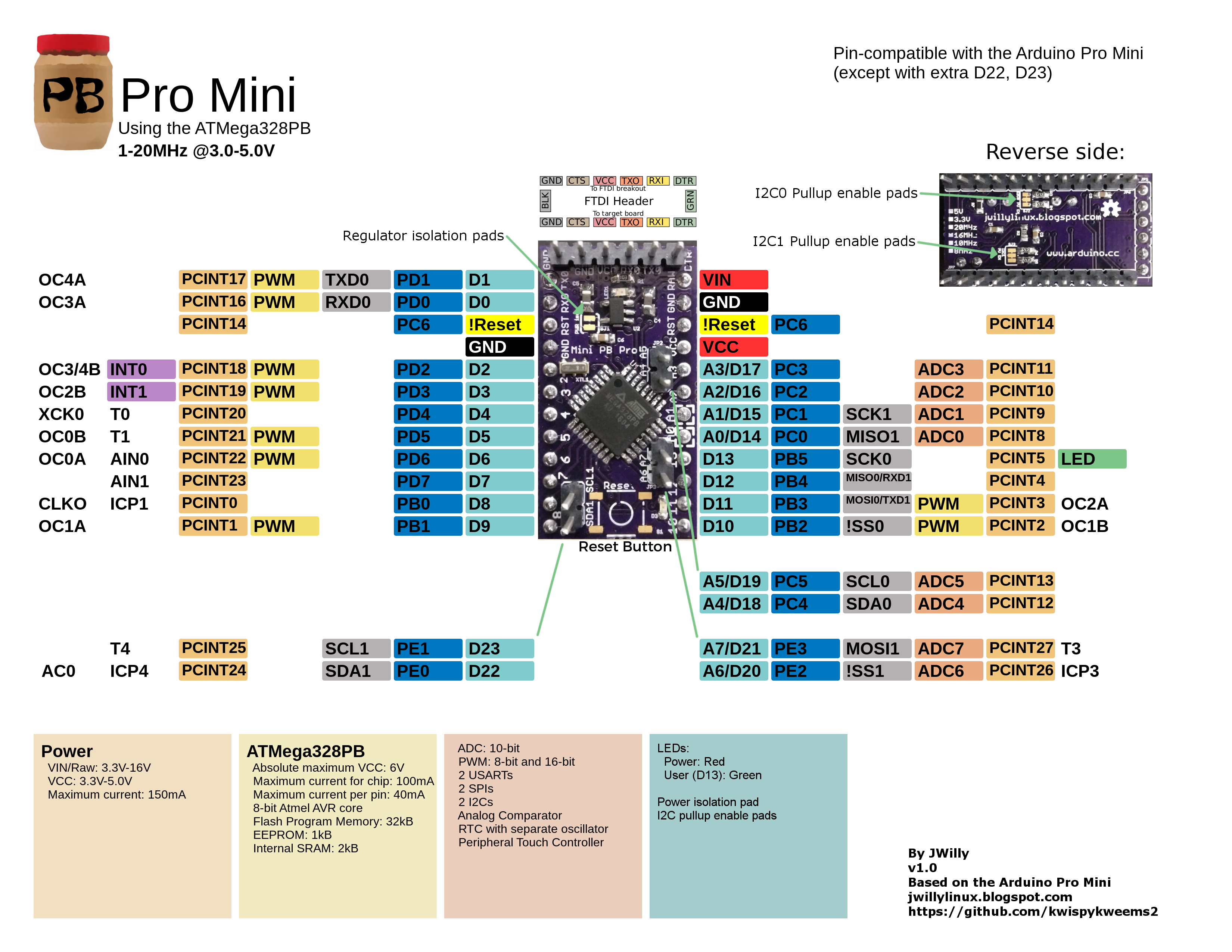No, it isn't Lead, nor is it Peanut Butter. It is the 'B' version of the prolific ATmega328P microcontroller which started all this maker craziness off!
 |
| Top view of PB Pro Mini |
Description
This is a minimal microcontroller board with only a voltage reg, crystal, I2C pull-ups, LEDs and the chip itself. The goal here is to reduce costs while hosting the beefy 328PB!
This is based on, and pin compatible with, the Arduino Pro Mini 5v/16MHz from Sparkfun.
This is based on, and pin compatible with, the Arduino Pro Mini 5v/16MHz from Sparkfun.
Notable, not-so-minor improvements for the 'B' version:
- 2 UARTs
- 2 I2Cs (TWI)
- 2 SPI
- Qtouch
- 5 Timers (with OC, IC, and PWM)
Everything else is about the same. You should be aware the clock driver on the chip is a low-power version, but this board and crystal operate at 16MHz just fine at 5V. The Arduino library I've been using for the PB has been working without a problem!
Getting Started
You'll need a FTDI Friend or FTDI Cable to program this as there is no secondary USB chip, like on the Arduino Uno. You'll also need the Arduino libraries to support this new micro (see my blog post), or go directly to Watterott's GitHub.
Downloads & Links
 |
| Bottom view of PB Pro Mini |
Purchase
If you send me $10 and an address via PayPal, I'll send you one (5V, 16MHz). Of course it'll be hand soldered! Lower US states only, unless you send me extra for international shipping.
Pinout Diagram
~JWilly

Comments
Post a Comment